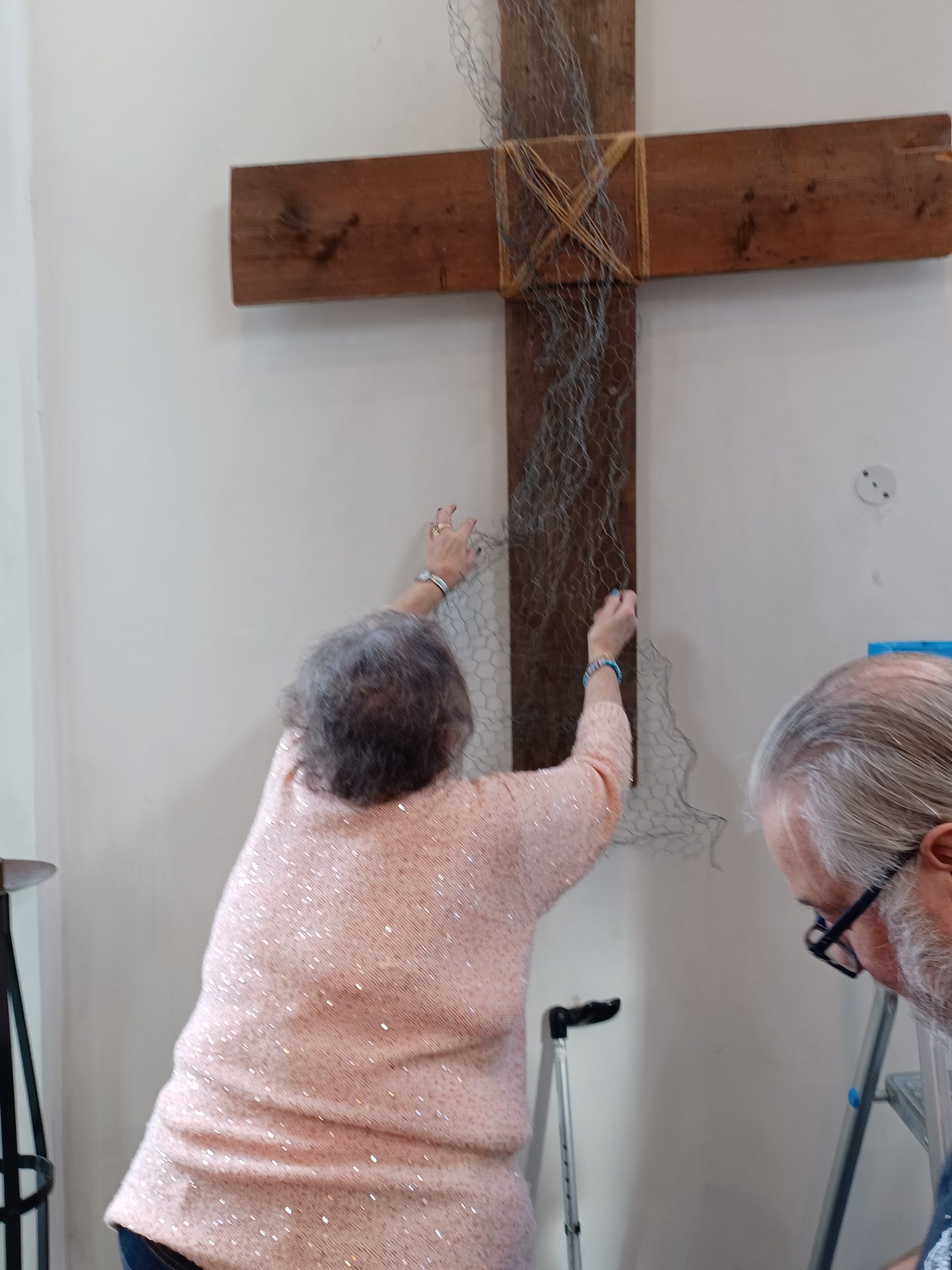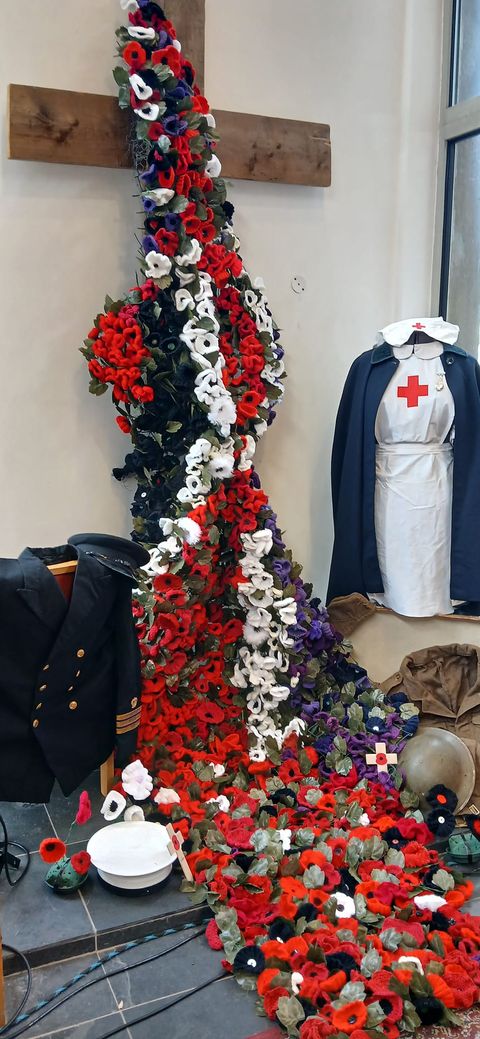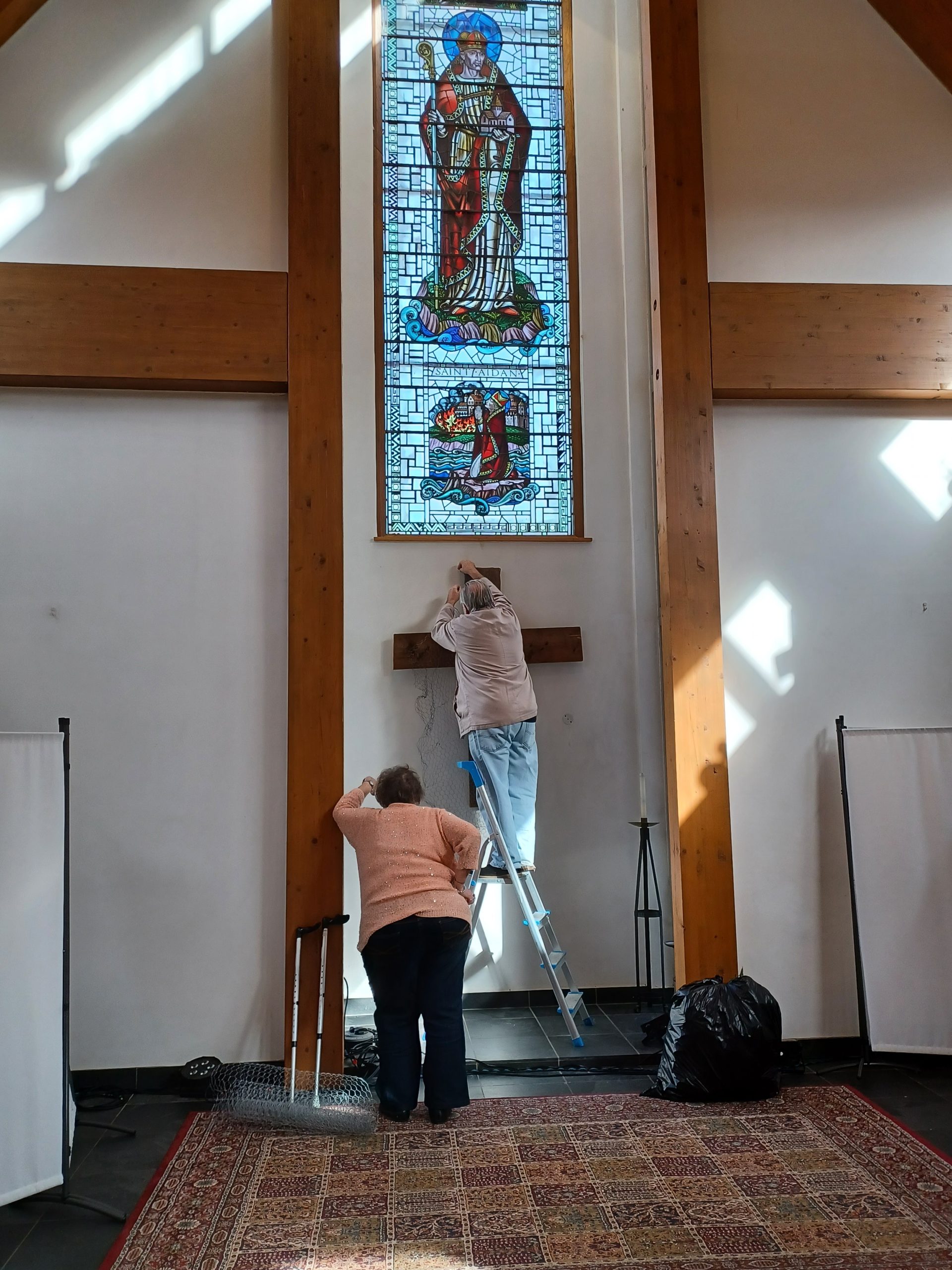Remembrance Day Poppy display.
Timebank Outreach Worker Sally was inspired to get Time Timebank members to use their skills and help create a beautiful poppy display in Ernesettle.
Members (and non members) from across the city were invited to put their needles and hooks to work and together they created over 1000 poppies for the Remembrance Day display in St Aidans Church.

Linda B and her husband Pete took the lead on setting up the framework, which was made of chicken wire, for the display which was to run down from the Cross at the heart of the church and cascade to the floor.
This gave the base structure and, when covered with camouflage material, it made the poppies easy to attach.
A big thank you goes out to everyone who has given their time to make this amazing display come to fruition.
Linda and Pete who installed the framework the poppies will be attached to.
Church members from St. Aidan’s: Linda, Laraine, Rosemary, Mandy, Val M, Kay, Lesley, Pauline, Lynda M, Debbie, Lisa E, Sheila, Sue L, Zoe & Sally, Members of Glad Rags – Sharon, Alison and Keren.
Whitleigh Big Local, Knit and Natter, The Village Hub – Susan T and Claire. Extra helpers have been – Wendy, Julie F, Karen W, Judith, Linda F, Lynda K and a lady who knocked on Lynda K’s door after hearing we were making poppies and handed her 25!
Sharon form Gladrags said:
‘I decided to make 22 poppies, one for each year her dad served. My dad served as a memory for those who had fallen’.
The finished display looked truly wonderful and everyone who helped make it were invited by the Vicar to join the service on Sunday 10th November to see it completed in all its glory.
The different poppy colours explained.
RED POPPY
The red poppy is the most famous symbol used to commemorate those who sacrificed their lives in World War One and conflicts that followed. Wearing a poppy was inspired by the fields of poppies that grew where many of the battles were fought. The red poppy belongs to the Royal British Legion – a charity created by veterans of World War One. They say that the red poppy represents remembrance and hope.

PURPLE POPPY
The purple poppy is often worn to remember animals that have been victims of war. Animals like horses, dogs and pigeons were often drafted into the war effort. In particular, many horses were killed or injured in World War One.
BLACK POPPY
The Black Poppy Rose commemorates the contributions of black, African and Caribbean communities to the war effort – as servicemen and servicewomen, and as civilians.
WHITE POPPY
They say that the white poppy commemorates people who died in conflict, but focuses on achieving peace.
“How brilliant , and what’s extra special about it for me is it’s informal volunteering at it’s best. Some of these poppies have been made at groups while others have been done by people at home. Everyone has had the opportunity to engage where and how they want to”.
Alan Butler – Timebank Coordinator

